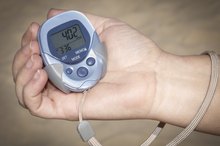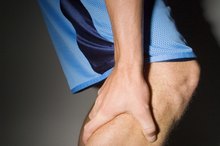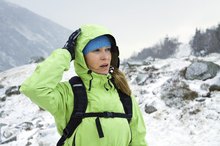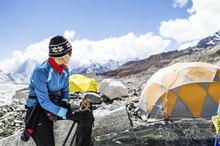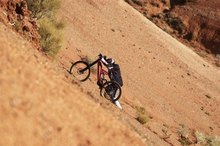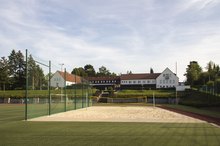How to Calculate Golf Yardages at Altitude
Golf truly is a global game. With a wide variety of courses around the world, odds are you will play at least one course in your travels that takes you to great altitudes. Colorado is a favorite golf location in the United States, while the rocky terrain of Switzerland has several famous courses overseas. The golf ball travels farther at altitude than at sea level 2. Professional golfers playing at altitude are very precise with their yardages. With the following tips and suggestions, you can easily calculate golf yardages at altitude 2.
Calculate Golf Yardage at Altitude
Determine the ideal trajectory for your shot. Lower shots will be less affected by altitude, while shots that travel higher tend to hang in the altitude for longer periods of time, carrying farther.
How to Determine Walking Speed
Learn More
Choose your club and note its tendencies. Drivers are designed to launch the ball high into the air, while wedges can be played for low and spinning shots.
Add 10 percent of extra distance for every 5,000-foot increase in altitude. If you normally hit your 7-iron 150 yards at sea level, you should plan for 165 yards in the Rocky Mountains.
What Causes Sciatic Nerve Pain When Walking?
Learn More
Add 20 percent if you are playing an extremely high golf course, at 10,000 feet above sea level.
Determine how far your ball actually travels. The carry time will differ based on launch and contact conditions. Every golfer's swing and impact conditions are different, so practice on the range to dial in your yardages on the rangefinder.
Lessen your projected distance the closer you get to sea level. Plan for a decrease in yardage the closer you get to sea level.
Judge the heat, humidity and air conditions. Altitude has more of an effect on extreme air conditions. According to major champion Tom Watson, in the cool morning air, the ball doesn't travel as far. However, as the air dries out and the day becomes hot and humid, the ball starts to jump again.
Tips
Practice makes perfect: Experiment with the altitude to see how the thin air affects your individual shots.
- Determine the ideal trajectory for your shot.
- Every golfer's swing and impact conditions are different, so practice on the range to dial in your yardages on the rangefinder.
Related Articles
References
- Probable Golf Instruction: Altitude & Club Selection
- Golf Digest: Altitude Adjustment
- Luks AM, Swenson ER, Bärtsch P. Acute high-altitude sickness. Eur Respir Rev. 2017;26(143) doi:10.1183/16000617.0096-2016
- Hifumi T, Kondo Y, Shimizu K, Miyake Y. Heat stroke. J Intensive Care. 2018;6:30. doi:10.1186/s40560-018-0298-4
- Bergeron MF. Heat cramps: fluid and electrolyte challenges during tennis in the heat. J Sci Med Sport. 2003;6(1):19-27.
- Guerra KC, Crane JS. Sunburn. [Updated 2018 Nov 23]. In: StatPearls [Internet]. Treasure Island (FL): StatPearls Publishing; 2019 Jan-.
- Meier D, Collet TH, Locatelli I, et al. Does This Patient Have Acute Mountain Sickness?: The Rational Clinical Examination Systematic Review. JAMA. 2017;318(18):1810-1819. doi:10.1001/jama.2017.16192
- Paralikar SJ. High altitude pulmonary edema-clinical features, pathophysiology, prevention and treatment. Indian J Occup Environ Med. 2012;16(2):59-62. doi:10.4103/0019-5278.107066
- Harvard Health Publishing. Into thin air: Medical problems at new heights. Harvard Health.
Writer Bio
Lyle Stefanavich started writing professionally in 2005. His work has appeared in the "Olivet College Echo," "Battle Creek Enquirer," "The South End Newspaper," TellUsDetroit.com, "Warrior Within Magazine," "Dearborn Press and Guide," Dethoops.com, CSTV.com, and UCSHO.com, among other publications. Lyle holds a Bachelor of Science in finance from Wayne State University and is pursuing his Master of Business Administration.
